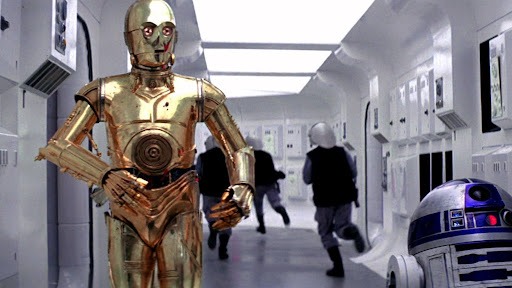The journey of robots, from the pages of novels to the factories and homes of today, is a fascinating story that combines imagination and creativity. Let’s check out this amazing development.

In the 19th century, where literature began to explore the concepts of artificial life. Mary Shelley’s Frankenstein, published in 1818, discussed the themes of creation and fruit, setting the scene for later robot stories. In 1920, Czech writer Karl Chapek coined the term “robot” in his play “R.U.R.” (Rossom’s Universal Robots), which featured artificial workers rebelling against their creators – an early warning story about technology gone wrong.
As the industry progressed, inventors began to create mechanical devices that mimicked the actions of humans or animals. In the 18th and 19th centuries, automata captivated audiences with intricate clockwork designs and demonstrated what mechanical machines could do.
The backdrop of World War II accelerated technological progress, resulting in computers and early machines performing specialized tasks. This time, it paved the way for the future robot revolution.

The 1950s and 60s marked the emergence of robotics as a separate discipline. George Dewell invented Unimate, the first robotic robot, which revolutionized the manufacturing process. This paved the way for robots to perform more complex tasks as they began to transition from simple mechanical tools to programmable machines with the ability to learn and adapt.
At the same time, research on Artificial Intelligence (AI) accelerated, leading to machine vision and learning – key areas for the development of autonomous robots. In the 1970s and 1980s, robots became major players in industrial environments. Companies such as FANUC and KUKA have developed robotic arms that are ideal for precise tasks such as welding and assembly, or changing production processes. This wave of automation increased productivity, redefined the landscape of workers, and sparked debates about the future of work.
From the 1990s to today, there has been an explosion of innovation in robotics. By using sophisticated sensors, advanced artificial intelligence algorithms, and powerful computing capabilities, robots are beginning to navigate increasingly complex environments. This era saw the emergence of self-driving cars, drones, and a variety of robotic applications in industries ranging from agriculture to healthcare.
Humanoid robots, such as Honda’s ASIMO and SoftBank’s Pepper, have shown advances in mobility and social interaction, blurring the lines between humans and machines.

Today, collaborative robots, or “cobots”, are designed to work alongside humans in a variety of environments, increasing productivity without replacing human workers. In sectors such as manufacturing and healthcare, robots have the potential to complement human capabilities and enhance collaboration over competition. In addition, robotics will play an important role in research and exploration and will be deployed in space missions, disaster response situations, and even in the workplace.
As robots become increasingly integrated into everyday life, ethical considerations arise. Questions of autonomy, accountability, and privacy highlight the need for responsible development and delivery of robotics technology.

Looking ahead, the future of robots promises a more profound change in how we live, work, and interact. The possibilities are seemingly endless with advances in artificial intelligence, machine learning, and human-robot interaction.
The evolution of robots from myth to reality demonstrates the human ability to create and understand. As we enter a new era of technology, robots continue their journey to inspire, challenge, and change our world. What happens next in this epic saga? Only time – and creativity – will tell.
Wait a minute! Are you intrigued by the realm of robots but unsure where to start? Space India’s Space Innovator’s Club provides hands-on learning in robotics, drones, AI, and IoT via STEAM-based activities. Participants develop crucial skills for the tech-driven future through ten immersive courses that range from building programmable robots to creating inventive prototypes.
—
If you like the blog, enrol your school or yourself (k-12 student) in our School Programs or Online Programs, call us at +91-74020 74020 or write to us for any query: getintouch@space-india.com


